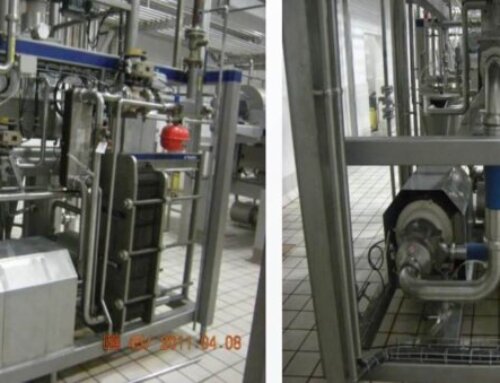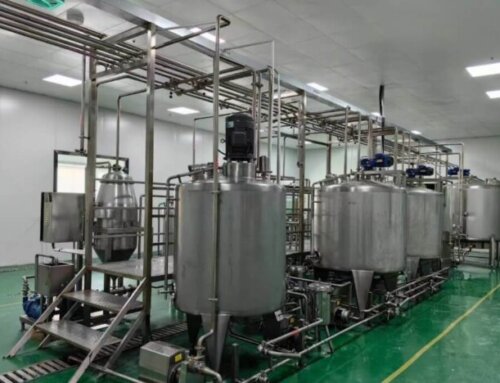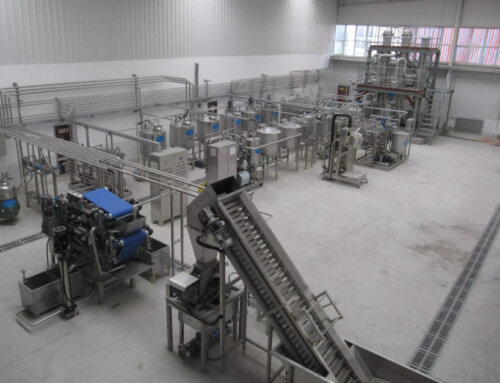Kombucha Processing Description
Kombucha is a fermented tea beverage that has become increasingly popular in recent years. It is made by combining sweetened tea with a symbiotic culture of bacteria and yeast (SCOBY), which initiates the fermentation process. During fermentation, the bacteria and yeast in the SCOBY consume the sugar in the tea, producing a variety of compounds such as organic acids, vitamins, enzymes, and trace amounts of alcohol. The resulting beverage is slightly carbonated, slightly sour, and slightly sweet, with a tangy flavor profile that is often compared to vinegar. Kombucha can be consumed directly, or flavored with various fruits, herbs, and spices to create different taste profiles.
Kombucha has been touted for its potential health benefits, which include aiding digestion, boosting the immune system, and reducing inflammation. However, more research is needed to confirm these claims.
Kombucha is a naturally sparkling fermented beverage that is rich in probiotics. It has a rich history in eastern cultures and has gained popularity worldwide in recent years. The traditional method of preparing kombucha involves the use of water, tea, sugar, and a SCOBY (symbiotic culture of bacteria and yeast), which is left to ferment for a period of 7 to 30 days. It’s important to note that while kombucha can be a healthy beverage choice for many people, it does contain a small amount of alcohol (typically less than 0.5%) due to the fermentation process.
The kombucha processing mainly involves machines including tea extraction/brewing tanks, sugar dissolving machines, plate coolers, fermentation tanks, Kombucha bottling/canning machines, RO water treatment system and CIP cleaning system. All the kombucha processing machines are made of SUS304/316 food-grade material, which can ensure high hygiene conditions during kombucha production.
The shelf life of kombucha can vary depending on a few factors, such as the level of carbonation, the storage conditions, and the recipe used. Generally, properly stored kombucha can last for several weeks to a few months.
When it comes to storing kombucha, it’s important to keep it in a cool and dark place, away from direct sunlight and heat sources. Exposure to light and heat can accelerate the fermentation process and reduce the shelf life of the beverage. The ideal temperature range for storing kombucha is between 32-39°F (0-4°C) for maximum freshness and flavor.
The capacity of kombucha processing is from 500L/H to 5000L/H, and the end products can be filled into PET bottles, glass bottles or cans.

Kombucha Processing Machine Introduction
Kombucha processing involves the steps required to make the fermented tea beverage. Here is a general overview of the kombucha processing steps:
Tea extraction and brewing
Brew tea: Tea extraction and brewing is the process of steeping tea leaves in hot water to extract the flavors, aromas, and beneficial compounds from the leaves. Begin by brewing a strong tea with water and tea leaves in the extraction tank. Black tea or green tea are most commonly used, but other types of tea can also be used. The tea is brewed for a few minutes and then removed from the heat source. Different types of tea require different water temperatures, ranging from 175°F (79°C) for green tea to 212°F (100°C) for black tea.

Sugar dissolving system
Add sugar: While the tea is still hot, dissolve the sugar and add it to the tea extraction tank. Sugar is added at 5% to 15%. The tea is allowed to brew for approximately 10 minutes and the tea leaves are removed.

Tea drinks cooling system
We use the plate cooler to cool down the tea drinks from 80℃ to 20-30℃, Allow the tea to cool to room temperature before proceeding. It’s important not to add the SCOBY until the tea has cooled down, as the high temperature can damage the live cultures in the SCOBY.

Kombucha Fermentation
Add SCOBY: Once the tea has cooled, transfer it to a fermentation tank and add the SCOBY. The SCOBY is a rubbery, jelly-like disk that contains live microorganisms that are responsible for fermenting the tea.
Fermentation: The kombucha is left to ferment for a period of time, typically 7-14 days, and control the fermentation temperature between 20-30°C (68-86°F). During this time, the bacteria and yeast in the SCOBY consume the sugar in the tea, producing a variety of compounds such as organic acids, vitamins, enzymes and trace amounts of alcohol(0.5%). The fermentation process also produces a small amount of carbon dioxide, which gives the kombucha its slightly fizzy and tart taste.
The fermentation tanks are the core equipment for processing kombucha, they should be equipped with airtight lids or covers to prevent contamination and maintain optimal fermentation conditions. The tanks also need to have CIP cleaning ball, ventilation, heating or cooling jacket, temperature sensor, sample valve, level sensor, pH meter, etc. All the valves, connections, and tank bodies need to be in high hygiene condition to avoid kombucha contamination during the fermentation process.
Second fermentation (optional): After the initial fermentation is complete, some kombucha makers choose to do a second fermentation to add flavor and increase carbonation. This involves transferring the fermented kombucha to a sealed bottle or cans along with additional flavorings such as fruit or herbs, and allowing it to ferment for another 1-7 days.

Kombucha bottling or canning
Once the desired flavor and carbonation levels are achieved, the kombucha is bottled or canned and refrigerated to slow down the fermentation process. At this point, it can be consumed as is or flavored with various fruits, herbs, and spices to create different taste profiles.
The ideal temperature for bottling kombucha is between 68-72°F (20-22°C). This temperature range allows for optimal carbonation and flavor development.
it is important to ensure that the machine is designed specifically for filling and sealing carbonated beverages like kombucha, as this requires specialized equipment to prevent over-carbonation or under-carbonation, which can affect the taste and quality of the final product.





